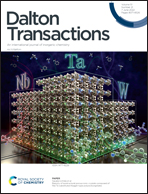Role of Ce in the enhanced performance of the water oxidation reaction and urea oxidation reaction for NiFe layered double hydroxides†
Abstract
Atomic doping and surface engineering are regarded as a promising method for improving their electrochemistry performance toward the water oxidation reaction and urea oxidation reaction (UOR) for layered double hydroxides (LDHs) containing low cost transition metals. However, the mechanism of how foreign ion doping and interface construction enhance catalytic activity remains unclear. In this work, NiFe LDH is reported as an example where Ce (Ce-NiFe LDH) is doped or the interface is constructed with Ce(OH)3(Ce(OH)3@NiFe LDH), and water oxidation and urea oxidation reaction are used as probe reactions. The Ce(OH)3@NiFe LDH material shows superior electrocatalytic performance for the water oxidation reaction (at an overpotential of 220 mV@10 mA cm−2) and urea oxidation reaction (at a potential of 1.40 V@10 mA cm−2), which is one of the best electrocatalytic performances reported so far. After a long time of stability testing, it was found that the catalytic current had significant attenuation, and further characterization showed that the surface of the electrode would be oxidized to oxyhydroxide, which is the true active species. The experimental results demonstrate that foreign Ce and Fe atom doping and interface construction improve the exposure of active centres, enhance the electron transfer rate and reduce the impedance of the NiFe LDH material. It is worth noting that this work provides new ideas for designing efficient, stable and environmentally friendly catalysts for water splitting and urea oxidation by means of doping and interface construction.



 Please wait while we load your content...
Please wait while we load your content...